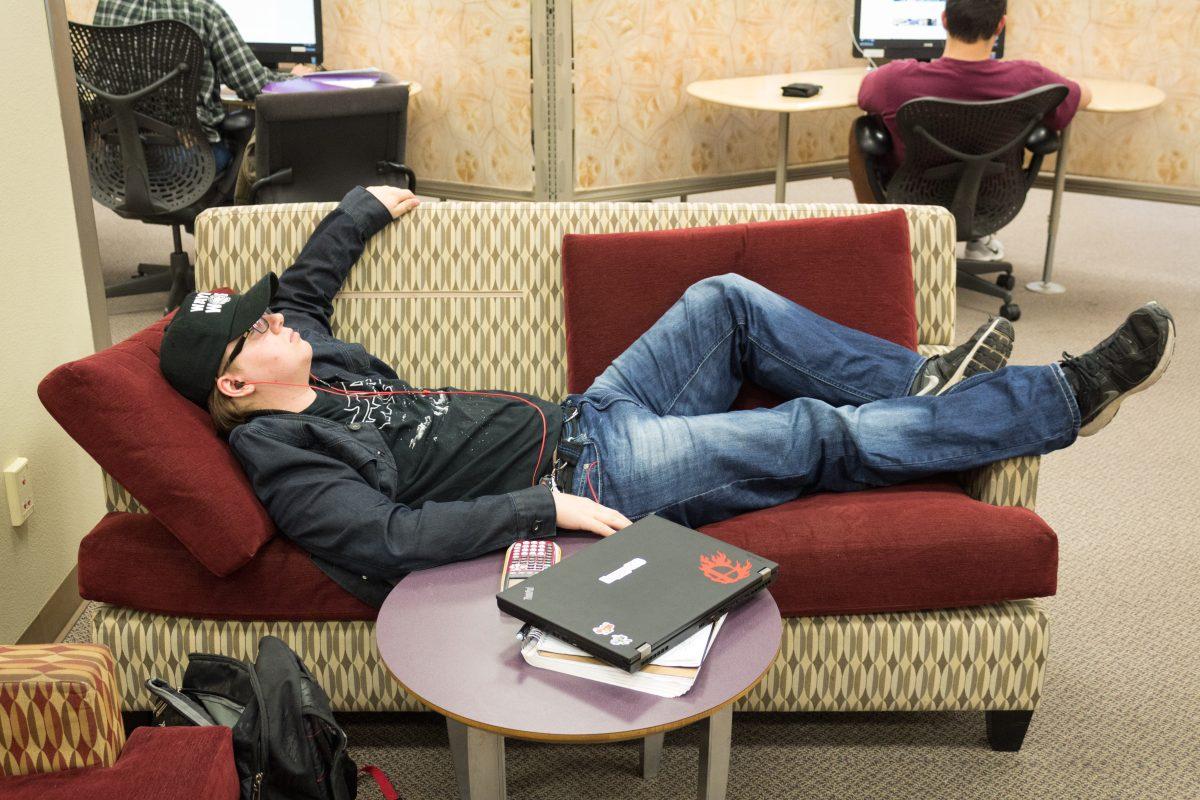Irregular sleep cycles could lead to infection or a stroke according to recent research at the center for biological clocks research at Texas A&M.
The center has at least six different labs researching circadian rhythms, each from a different angle. The research and understanding of internal biological clocks within different species of animals has led to new discoveries, including links between the internal clock and human health.
Paul Hardin, director of the center for biological clocks research at Texas A&M, has his own research project he leads within the center.
Hardin said he aims to understand how the central timekeeping mechanism in the body controls physiology, behavior and metabolism, as well as how it controls gene expression in the form of the peptide, which then controls behavior.
Their approach to this topic is using genetics — by analyzing mutations in genes, called clock genes, they can understand the flow of information between neurons in signaling pathways.
Gladys Ko, associate professor at A&M, focuses on how circadian clocks regulate function the retina, which is the neural tissue within the eye with her research. Ko said her research is more focused on the visual system, neuroscience behind it and how the channels control neuronal activity.
“Basically, our eyes perceive light, but our eyes are not just passively responding to the light,” Ko said. “So what happens is that the circadian clocks within the eye prepare the eyes to anticipate the upcoming light or darkness. Generally speaking, usually during the nighttime our eyes are more prone to the light than during the daytime. So this is a practical implication.”
Ko approaches her research process by entraining retinal cells to a 24-hour cycle with 12 hours of light and 12 hours of darkness. After a a few days, they leave the cells in complete darkness, which they call the free-running period, allowing the cells to run on their own internal clock. Then they take the cells, utilize electrophysiology recording and analyze their data.
David Earnest, a professor in the department of science and therapeutics experimental therapeutics, leads research within the center for biological clocks at A&M focuses on why it’s important for our bodies to maintain physiological homeostasis. His research mainly focuses on implications of disrupting internal biological clocks in an organism.
Earnest approaches his research process by examining metabolism glucose levels in the blood of animals and compares it to animals under shift worker conditions. He then analyzes how it affects their health and how it impacts their metabolism, obesity and cardiovascular health.
“College students in particular have a disrupted influence on their sleep wake schedules and their internal biological clocks because of the irregular sleep times and wake times that they have,” Earnest said.
Earnest’s research looks at implications of disruptions in biological clocks and their impact on human health. Hardin said diabetes and obesity in particular have shown a connection between circadian and cardiovascular rhythms, and there is a clear connection between the two rhythms.
“We’ve been looking at implications of disrupting 24-hour rhythms, typically in shift workers, and the impact upon stroke,” Earnest said. “What we found is that there is a clear connection between the disruption of these rhythms, for example stroke and animals that are put in shift work cycles, has shown a more severe stroke where the blood is cut off from the brain in animals whose biological clocks are maintaining normal synchronization with the environment.”
Aggies research circadian rhythms
November 5, 2017
Photo by Photo by Carlos Romero
Getting a good night of sleep can be difficult for students to obtain between classes, social life and extracurricular activities.
0
Donate to The Battalion
Your donation will support the student journalists of Texas A&M University - College Station. Your contribution will allow us to purchase equipment and cover our annual website hosting costs.
More to Discover








